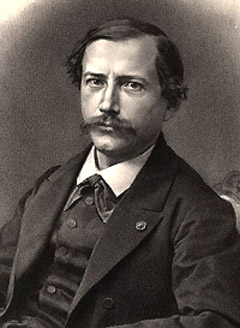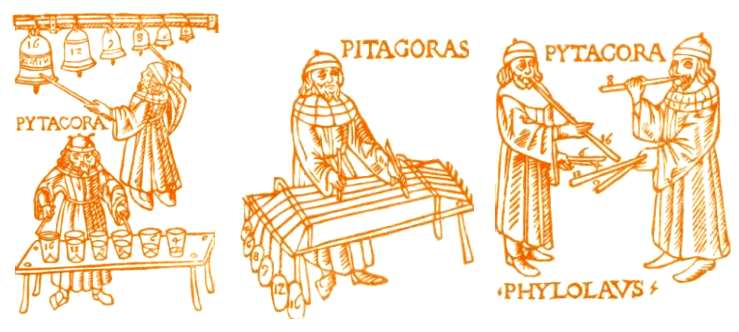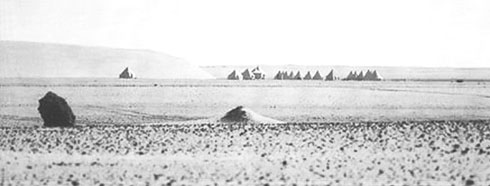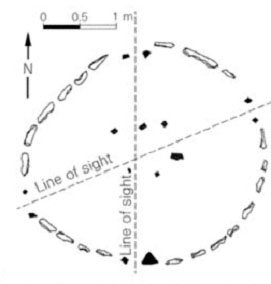
"... the solar system may have changed so much since it was created that a study of the present state would tell us very little about it's origin." -- Hannes O.G. Alfvén, physicist, 1954
"... looking at the map of craters of Venus, all of them seem relatively pristine, and there are no older ones." -- David Grinspoon, planetary scientist, August 2004
"Assuming Venus was exposed to the same rain of asteroids and comets that the other planets experienced, they expected Magellan would spot about 5000 craters on the planet's surface. But they found only about 1000, suggesting that the planet's surface is actually very young ...." -- David Shiga, journalist, November 2006
Scientists assume based upon only their religion and no evidence, that Venus is billions of years old.
However, the reality is that no Venusian rock has ever been dated.
What data can scientists use to estimate the age of a planet whose rocks have never been dated?
Impact crater counts.
Venus has so few impact craters that they have literally been quantified --
less than 900.
And almost all of them (84%) are in pristine condition and have never even been affected by lava flows (97.5%).
Therefore Venus cannot possibly be billions of years old.
And the historical record demonstrates that Venus is a new planet that is only thousands of years old.
"As when the son [Jupiter] of devious-devising Kronos [Saturn] casts down a star [Venus], portent to sailors or to widespread armies of peoples gliterring, and thickly the sparks of fire break from it, in such likeness Pallas Athene swept flashing earthward and plunged between the two hosts; and amazement seized the beholders, Trojans, breakers of horses, and strong-greaved Achaians." -- Homeros, poet, Iliad, Book IV: 75-80
"There is a story, which even you have preserved, that once upon a time Paethon [Venus], the son of Helios, having yoked the steeds in his father's chariot, because he was not able to drive them in the path of his father, burnt up all that was upon the earth, and was himself destroyed by a thunderbolt. Now this has the form of a myth, but really signifies a declination of the bodies moving in the heavens around the earth, and a great conflagration of things upon the earth, which recurs after long intervals." -- Sonchis of Sais, priest, 6th century B.C.
"As Zeus's daughter [Venus] she'll be immortal and live in heaven with her brothers, Pollux and Castor, the heavenly twins, an extra star for ships to steer their courses by." -- Euripides, playwright, Orestes, 408 B.C.
"...the stars...fell from heaven at the time of Phaethon's [Venus's] downfall." -- Aristotle, philosopher, Meteorology, 350 B.C.
"Democritus however, insists upon the truth of his view and affirms that certain stars [Venus] have been seen when comets dissolve." -- Aristotle, philosopher, Meteorology, 350 B.C.
"Some of the Italians called Pythagoreans say that the comet is one of the planets [Venus]." -- Aristotle, philosopher, Meteorology, 350 B.C.
"The stars were fled, for Lucifer [Venus] had chased
The stars away, and fled himself at last."--Ovid, Metamorphoses Book II: Phaeton, 8
"Below the Sun revolves the great star called Venus, wandering with an alternate motion, and, even in its surnames, rivalling the Sun and the Moon. For when it precedes the day and rises in the morning, it receives the name of Lucifer, as if it were another sun, hastening on the day. On the contrary, when it shines in the west, it is named Vesper, as prolonging the light, and performing the office of the moon. Pythagoras the Samian, was the first who discovered its nature, about the 62nd olympiad, in the 222nd year of the City." -- Pliny the Elder, historian, 77
"On leaving the market-place along the road to Lechaeum you come to a gateway, on which are two gilded chariots, one carrying Phaethon [Venus] the son of Helius (Sun), the other Helius himself." -- Pausanius, geographer, Description of Greece: Argolis, 2nd century
"And in the time of Crotopus occurred the burning of Phaethon [Venus], and the deluges of Deucalion." -- Clement of Alexandria, priest, Stromata, 2nd century
"But this reign [The Reign of Quetzalcoatl], like that of Saturn, and the happiness of the world, were not of long duration...." -- Alexander Von Humboldt, naturalist, 1814
"Some Indian tribes of North-western America tell a story which bears a close resemblance to the story of Phaethon [Venus] and the chariot of the Sun, his father. The tale of Phaethon is related most fully in Ovid." -- James G. Frazer, translator, 1920
"Here you see the Morning Star [Venus]. Who sees the Morning Star shall see more, for he shall be wise." -- Black Elk, medicine man, August 1930
"... the morning star [Venus] lives to give men wisdom ...." -- Black Elk, medicine man, August 1930
"These four-planet systems and the inability of the ancient Hindus and Babylonians to see Venus in the sky, even though it is more conspicuous than the other planets, are puzzling unless Venus was not among the planets." -- Immanuel Velikovsky, cosmologist, 1950
"In an ancient Hindu tablet of planets, attributed to the year -3012 Venus among the visible planets is absent [Delambre, J.B.J., Histoire de l'astronomie ancienne I, Page 407, 1817: 'Venus alone is not found there.']." -- Immanuel Velikovsky, cosmologist, 1950
"Venus experienced in quick succession its birth and expulsion under violent conditions; an existence as a comet on an ellipse which approached the sun closely; two encounters with the earth accompanied by discharges of [electric] potentials between these two bodies and with a thermal effect caused by conversion of momentum into heat; a number of contacts with Mars, and probably also with Jupiter. Since all this happened between the third and first millennia before the present era, the core of the planet Venus must still be hot." -- Immanuel Velikovsky, cosmologist, 1950


















































